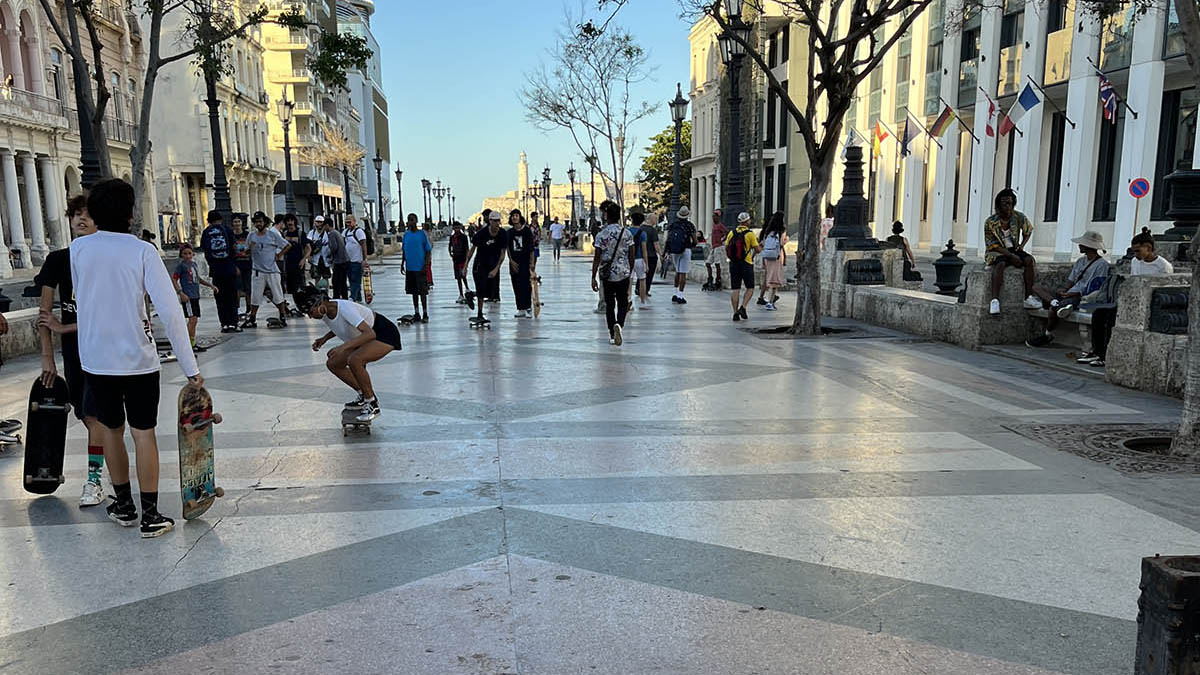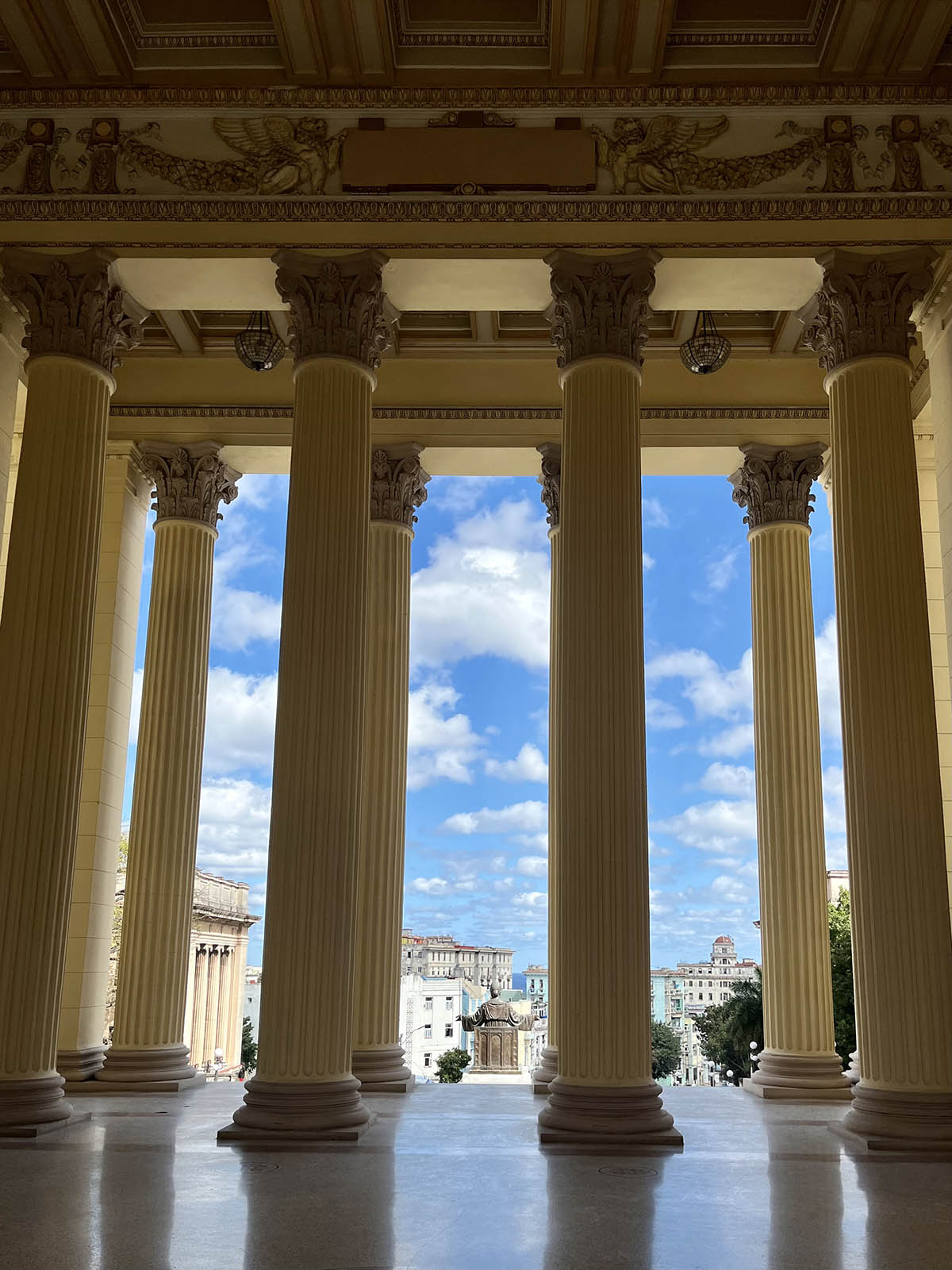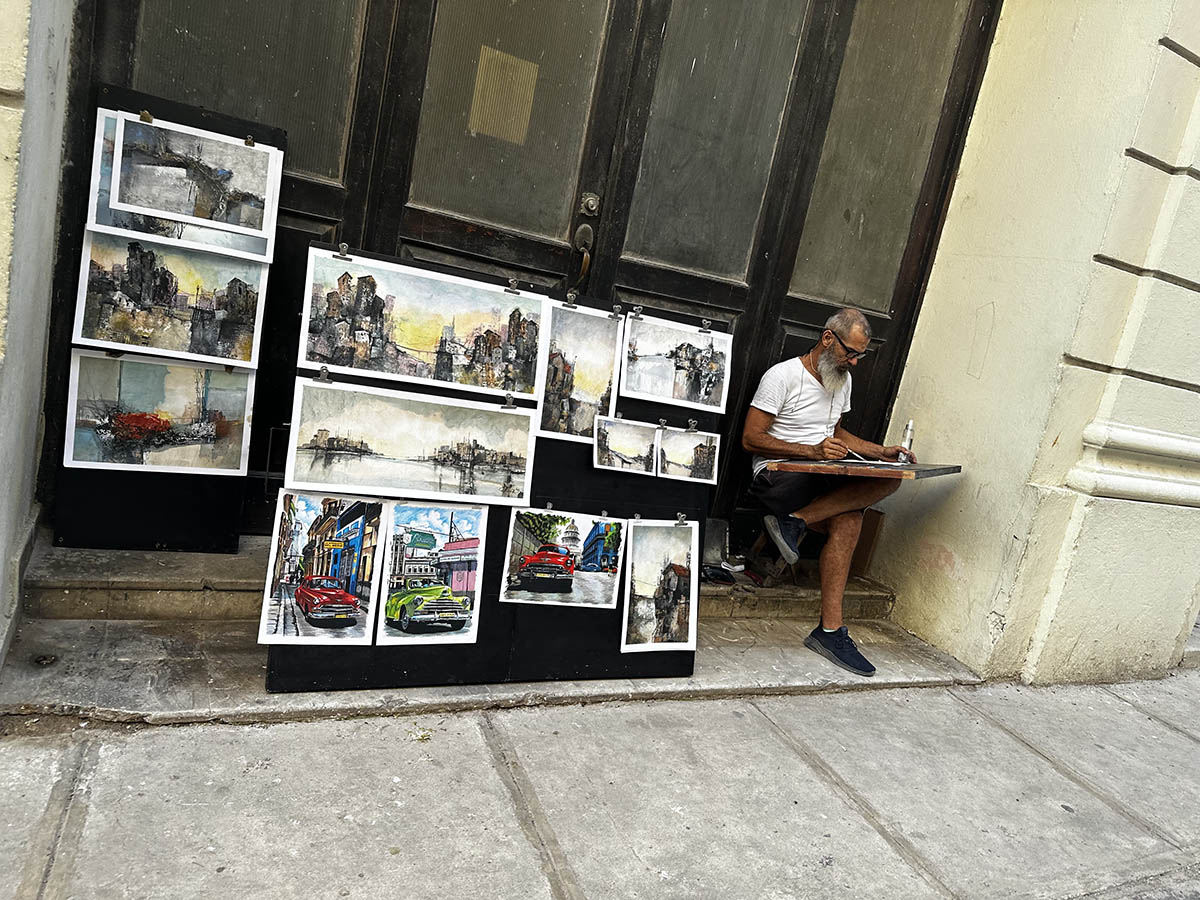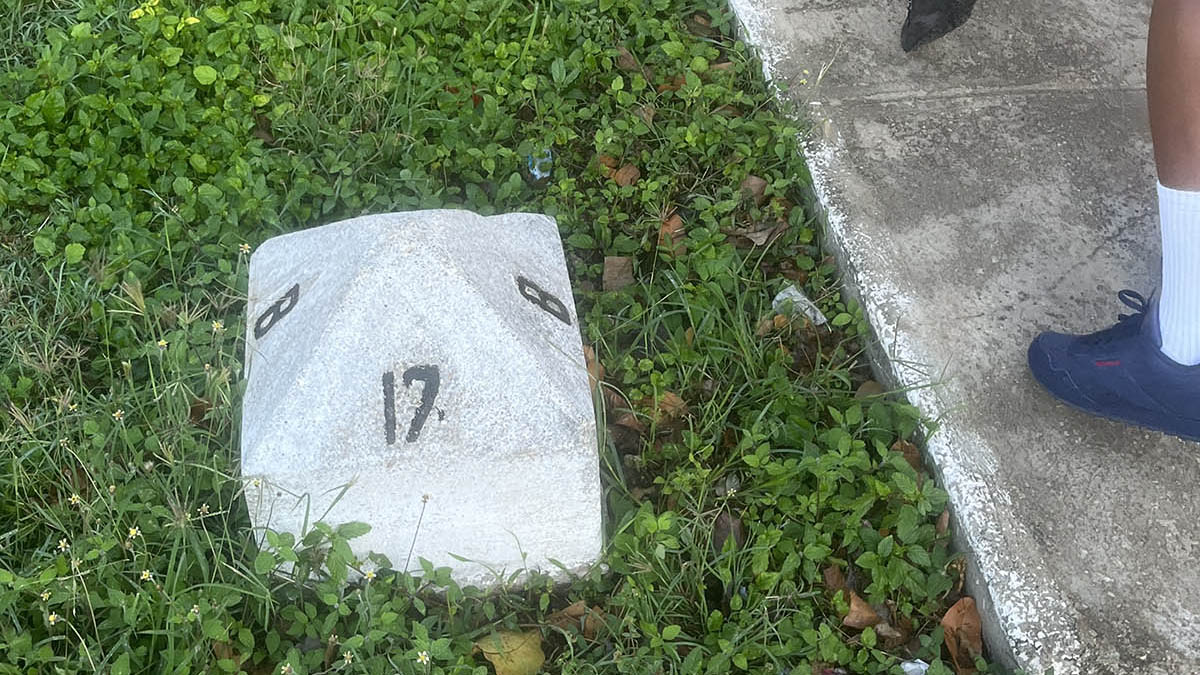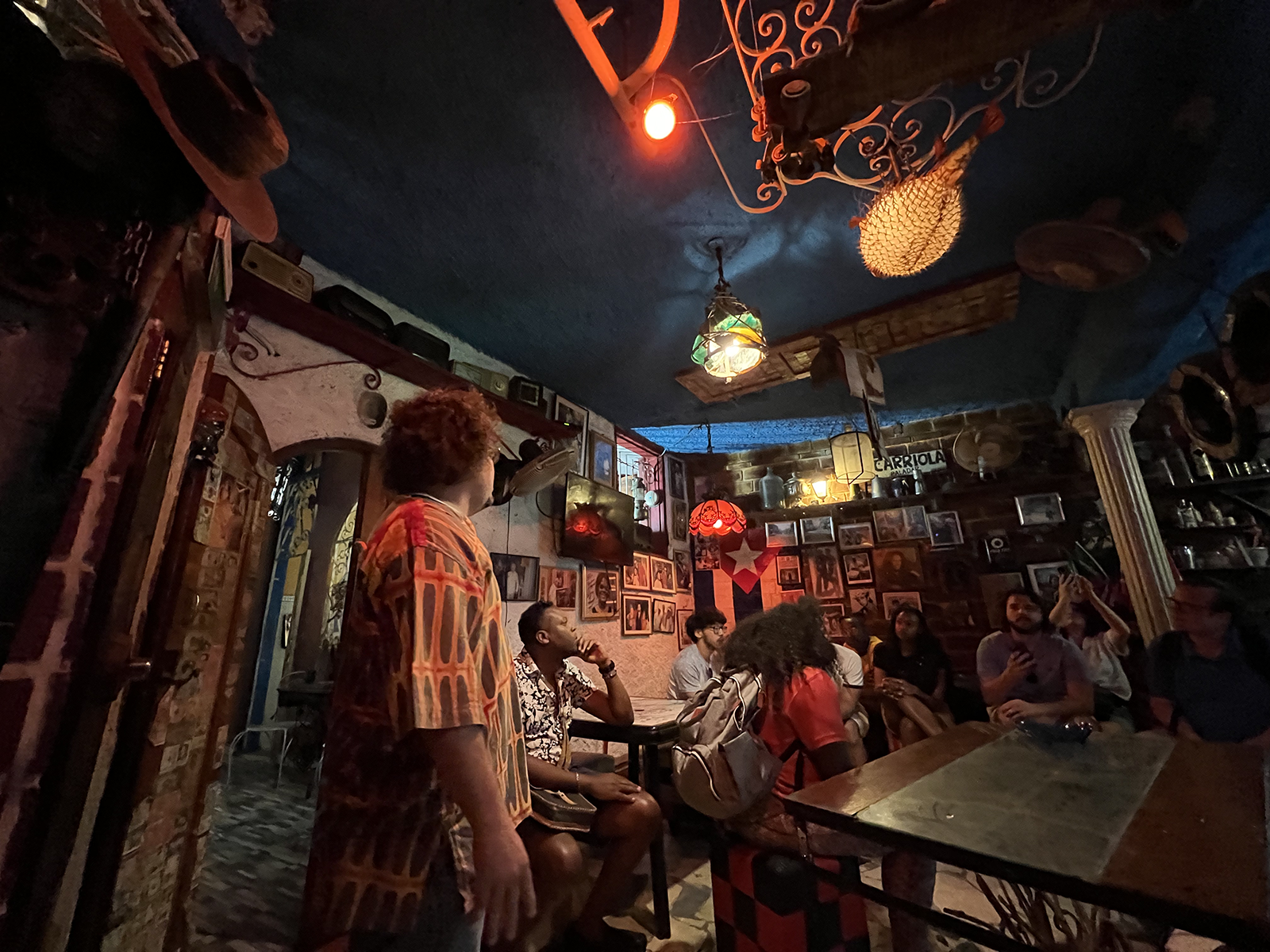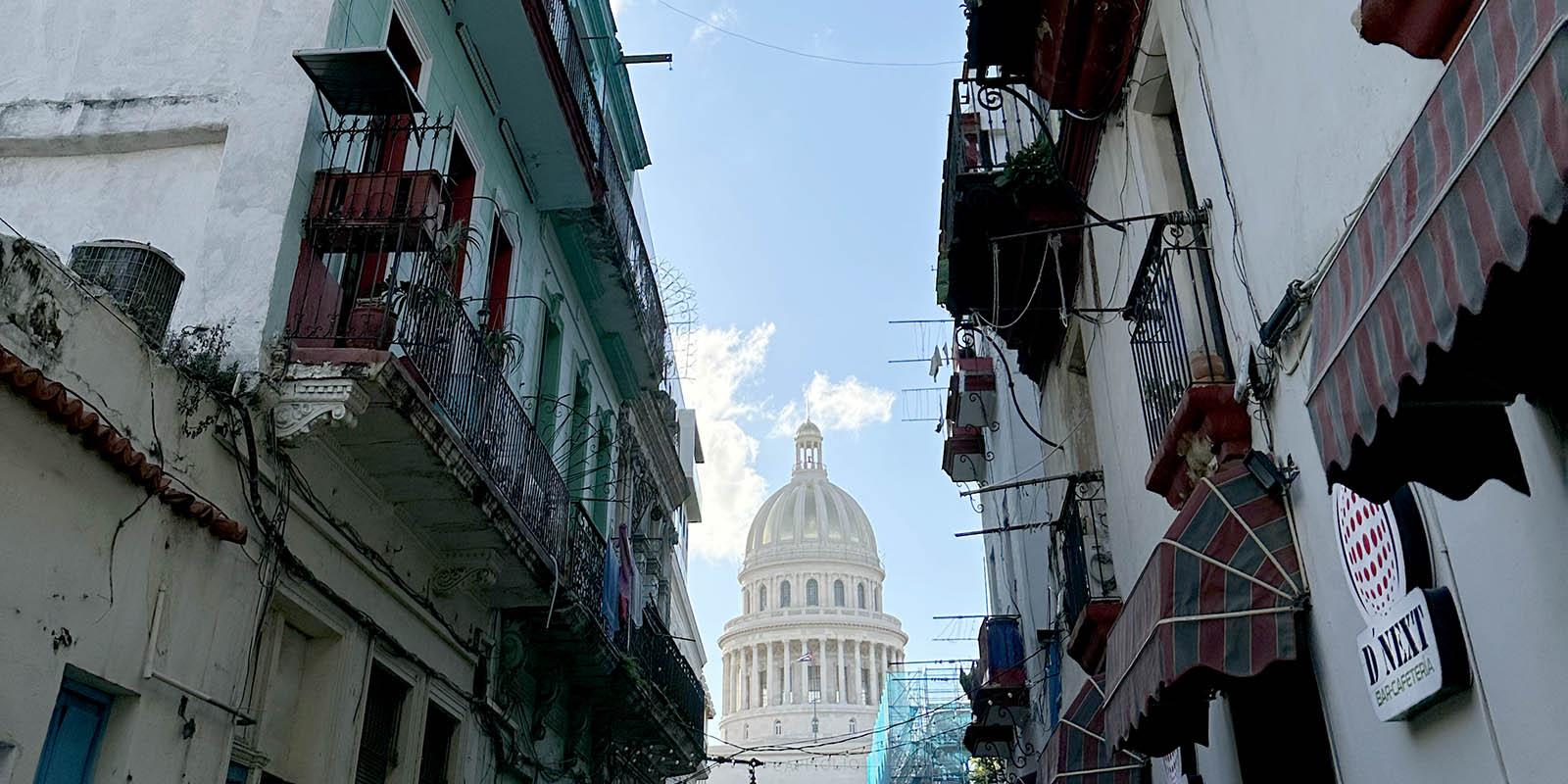Caption photo above: Architecture student Elena Poll’s picture of the surrounding neighborhoods in Havana’s capitol district show government priorities not for the people. “I found it ironic admiring the magnificence of the capitol while, just outside the window, the surrounding buildings were falling apart,” she said.
As University of Maryland architecture student Elena Poll walked through Havana, Cuba’s, stately capitol building, what struck her wasn’t the marble halls or its majestic dome, but what she saw in its shadow: faded, pastel facades of once glorious Spanish-style buildings, now crumbling in ruin.
The photo she snapped from the capitol’s windows joins a series of snapshots that, on its face, resembles an adventure-fueled trip abroad. But look closer, and you’ll discover a deeper commentary of a country’s resilient culture and people, a history shaped by over 60 years of communist rule and the enduring grip of a capitalist embargo.
In January, a dozen students explored the narrow streets and cobbled plazas of Havana, Cuba, to capture how the island’s economy, politics and culture are emulated in its eclectic architecture and urban fabric. Led by MAPP instructor Reemberto Rodriguez and Professor Gerrit Knaap, the trip was part of an interdisciplinary winter semester course, “Havana’s Art & Culture: The intersection of planning, architecture, preservation, and economics,” and the first study abroad trip to Cuba for the School of Architecture, Planning and Preservation. Fueled with perspectives from Cuban university faculty and local guides, the trip offered a case study of a city’s evolution and inertia, and how economics, preservation and urban planning intersect.
“One of the highlights of the journey was looking at Havana through the eyes of the 12 students in the course,” said Rodriguez, a Cuban native who came to the United States in 1966. “The beautiful combination of their naivety with their inquiring deep critical thinking and thoughtful questions taught me so much. “They saw so much more than I have ever seen by myself.”
In addition to daily reflections and lectures by Cuban professors, students were tasked with photographing aspects of Havana’s built environment—such as market stalls, street signs, sidewalks, and building facades—that constructed a compelling visual narrative and captured the city’s essence.
“One of my biggest takeaways from experiencing Havana is, if you are a designer or planner, you have to design for the people living in these spaces,” said Kenneth Wainaina, an international student who called Havana’s architecture “mind blowing.” “You must design with the future in mind.”
Below, students share takeaways from Havana, through the camera’s eye:
